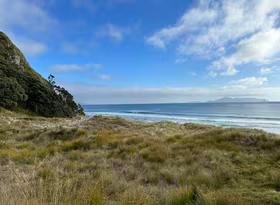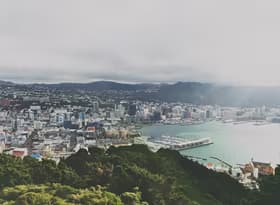New Zealand’s loser towns
New Zealand’s loser towns
There has been increasing discussion in the media over recent weeks about the plight of some of our provincial and rural economies. Shamubeel Eaqub from the NZIER has sparked debate by highlighting the situation and suggesting a greater regional focus in economic policy. What he is actually advocating in practice is a little unclear given that he says “for stagnating regions we need to build on their capabilities – help where there is a credible chance that the cost of investments will be more than repaid by future benefits” at the same time as saying that “current strategies of investment attraction and picking winners are not working.” My colleague, Benje Patterson, when writing a few weeks ago, rejected explicit government involvement in propping up businesses in rural areas, stating that “industry subsidies … tend to lead to less efficient resource allocations and weaken overall economic returns in New Zealand.”
Firstly, let’s make it clear that the increasing urbanisation of New Zealand’s population is nothing new. Graph 1 shows the country’s urban and rural populations over the last 130 years. Perhaps the most surprising aspect of the graph is that the nation’s rural population was under more pressure in the 1920s, in the 1940s during World War II, and between 1961 and 1976 than it has been recently. In fact, the country’s rural population has actually grown by an average of 0.7%pa since 1976, with growth averaging 1.1%pa between 2001 and 2006.[1]
Graph 1
Looking purely at the rural population risks missing the point that some, but not all, provincial towns are being squeezed by more than the aggregate figures would suggest. Table 1 shows the urban centres with some of the biggest population losses between the 2006 and 2013 censuses, as well as how much their populations have shrunk since their historic peaks.
Table 1
Why do they exist?
One of the common themes across many of these towns is the presence of a single major employer. Whether it be forestry (Tokoroa, Kawerau, Murupara), agricultural processing (Taumarunui, Dannevirke, Gore), the military (Waiouru, Burnham), railways (Taihape), or electricity generation projects (Turangi, Mangakino), the primary reason for most of these town’s existence has diminished or is no longer present.
For others, the reasons for their struggles are less obvious and are difficult to pin on much more than lifestyle choices and the drift to larger urban centres. For example, if we go back to 1936, Palmerston North and Wanganui were almost the same size. But Palmerston North has performed relatively well as an education and distribution hub, while its nearby neighbour has struggled to appear attractive over the longer-term for businesses or employees – perhaps due to the reduced importance of shipping as a transportation method compared with its heyday early last century.
The theories about why urban centres perform differently in terms of population and economic growth are complex, but one fact that is clear is a “path dependency”, or today’s situation being determined by critical decisions in the past. For example, there would never have been a town of any significance at Taumarunui without the employment opportunities provided until the late 1990s the town’s sawmill and freezing works. In turn, this industry is unlikely to have been established without the town’s original raison d’etre as a railway stop.
This path dependency means it’s overly trite to suggest that, just because there is no longer a strong economic reason for Taumarunui to exist, we should simply abandon it. When discussing the economic viability of towns, we are ultimately talking about people’s lives and wellbeing.
And that, perhaps, is the ultimate point that Mr Eaqub is trying to make. Even if growth in GDP per capita looks okay in some of these areas, a town with a shrinking population has to perform that much better on a per capita basis to maintain its critical mass. Reduced population can easily lead to a downward spiral of shrinking demand, loss of profitability and business closures, and reduced services, until all that’s left is a whole lot of boarded-up shops, a community hall, a church, and maybe a pub. The standard of living faced by people in stagnant or shrinking towns constantly feels under threat.
Infrastructure – a necessary, but not sufficient, ingredient
The success of an urban area is built on an interrelated combination of its locality, physical infrastructure, natural resources or other income source, employment opportunities, and attractiveness for young people. Generally, the government can do little about any of these factors except physical infrastructure. Many of New Zealand’s early settlements were determined by their suitability as ports, with wharves and mooring facilities some of the earliest infrastructure put in place. The construction of railways in the 19th century opened up transport links to other areas, enabling new settlements to grow. And even now, the government’s roading investment in the Waikato Expressway has been a significant factor in facilitating the faster spread of economic activity southwards from Auckland towards Hamilton.
But physical infrastructure can only do so much. There’s no point building a four-lane motorway from Tauranga to Kawerau, or from Hamilton to Taumarunui – it would be a very costly exercise and would not reverse the decline in either of the small towns. The government ultimately needs to decide the appropriate level of commitment to a town to ensure that an appropriate level of “infrastructure service” is provided to a town to cost-effectively alleviate or remove impediments to its long-term success.
Outside of physical infrastructure though, investment decisions should generally be made by private individuals. If no one is willing to stump up with their own money to invest in business in an area, it’s a pretty good sign (although not a perfect one) that the venture is not going to work. The probability of a government investing taxpayers’ money more efficiently and effectively than the private sector is low.
Big, small, and in between
One of the overarching messages from Mr Eaqub’s work is that the economic divergence between different parts of New Zealand is leading to higher levels of poverty in many provincial areas. But this is something of a chicken and egg argument. If a town is in decline, the most highly-skilled people and those with the greatest potential are likely to be the ones who leave first. The least mobile people will be the ones who feel like they may as well not bother moving because they would struggle to find work elsewhere anyway. Without a significant increase to their skill set, these people are likely to be living in relative poverty, whether it be in Tokoroa or Tauranga.
It’s ten years since the government introduced “limited employment localities”, which meant that people on the unemployment benefit couldn’t move to places where there were virtually no work opportunities and continue to get the dole. Essentially, the government showed its willingness to remove the social infrastructure safety-net and walk away from areas such as Great Barrier Island, Tikitiki, or Ruatoki. Such a stance is relatively easy to take when an area has a small population and has already undergone substantial decline.
At the other end of the size spectrum are towns like Rotorua, Wanganui, and Invercargill. These are in the “too big to fail” category, and the case for government commitment to the medium-term future of the towns (eg with the installation of ultra-fast broadband) is more obvious. Even so, it is an ongoing battle for these urban areas to maintain their populations. Innovative thinking is necessary to help improve factors outside of physical infrastructure. An example of this sort of thinking is the Southern Institute of Technology’s zero-fees policy, which has effectively boosted Invercargill’s attractiveness for young people.
It’s the shrinking middle-sized towns where the biggest difficulties arise. Should the government provide assistance for people wanting to move out of Tokoroa or Taumarunui and get work elsewhere, or does that policy simply accelerate the implosion of those towns? Should the government have some sort of scholarship scheme in place to provide young people from these towns with opportunities for tertiary study or training, in recognition of their low socioeconomic starting point?
Whatever the case, you can’t make people live where they don’t want to. With there already being such a huge monetary incentive in the form of the house price gap between Auckland and Tokoroa, no amount of additional financial persuasion is going to encourage many people to move to the South Waikato – even if they are retired or their employment is not location dependent. Any attempts to herd people, or investment funds, where they would not go by themselves are only likely to delay the inevitable and are akin to pushing the proverbial uphill.
[1] A rural/urban split of the population from the 2013 census on a comparable basis is not yet available.








